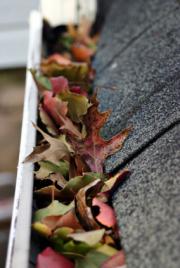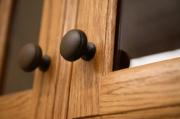Radon Risks
The Risk of Living With Radon
Scientists are more certain about radon risks than from most other cancer-causing substances.
Radon gas decays into radioactive particles that can get trapped in your lungs when you breathe. As they break down further, these particles release small bursts of energy. This can damage lung tissue and lead to lung cancer over the course of your lifetime. Not everyone exposed to elevated levels of radon will develop lung cancer. And the amount of time between exposure and the onset of the disease may be many years.
Like other environmental pollutants, there is some uncertainty about the magnitude of radon health risks. However, we know more about radon risks than risks from most other cancer-causing substances. This is because estimates of radon risks are based on studies of cancer in humans.
Smoking combined with radon is an especially serious health risk. Stop smoking and lower your radon level to reduce your lung cancer risk.
Children have been reported to have greater risk than adults of certain types of cancer from radiation, but there are currently no conclusive data on whether children are at greater risk than adults from radon.
Your chances of getting lung cancer from radon depend mostly on:
- How much radon is in your home
- The amount of time you spend in your home
- Whether you are a smoker or have ever smoked
Radon Risk If You Smoke
|
Radon Level |
If 1,000 people who smoked were exposed to this level over a lifetime*… |
The risk of cancer from radon exposure compares to**… |
WHAT TO DO: Stop smoking and… |
|
20 pCi/L |
About 260 people could get lung cancer | 250 times the risk of drowning | Fix your home |
|
10 pCi/L |
About 150 people could get lung cancer |
200 times the risk of dying in a home fire |
Fix your home |
|
8 pCi/L |
About 120 people could get lung cancer |
30 times the risk of dying in a fall |
Fix your home |
|
4 pCi/L |
About 62 people could get lung cancer |
5 times the risk of dying in a car crash |
Fix your home |
| 2 pCi/L | About 32 people could get lung cancer | 6 times the risk of dying from poison |
Consider fixing between 2 pCi/L and 4 pCi/L |
|
1.3 pCi/L |
About 20 people could get lung cancer |
(Average indoor radon level) | (Reducing radon levels below 2 pCi/L is difficult.) |
| 0.4 pCi/L |
About 3 people could get lung cancer |
(Average outdoor radon level) |
|
|
Note: If you are a former smoker, your risk may be lower. * Lifetime risk of lung cancer deaths from EPA Assessment of Risks from Radon in Homes (EPA 402-R-03-003). ** Comparison data calculated using the Centers for Disease Control and Prevention’s 1999-2001 National Center for Injury Prevention and Control Reports. |
|||
Radon Risk If You’ve Never Smoked
|
Radon Level |
If 1,000 people who NEVER smoked were exposed to this level over a lifetime*… |
The risk of cancer from radon exposure compares to**… |
WHAT TO DO: |
|
20 pCi/L |
About 36 people could get lung cancer |
35 times the risk of drowning |
Fix your home |
|
10 pCi/L |
About 18 people could get lung cancer |
20 times the risk of dying in a home fire |
Fix your home |
|
8 pCi/L |
About 15 people could get lung cancer |
4 times the risk of dying in a fall |
Fix your home |
|
4 pCi/L |
About 7 people could get lung cancer |
5 times the risk of dying in a car crash |
Fix your home |
|
2 pCi/L |
About 4 people could get lung cancer |
6 times the risk of dying from poison |
Consider fixing between 2 and 4 pCi/L |
|
1.3 pCi/L |
About 2 people could get lung cancer |
(Average indoor radon level) |
(Reducing radon levels below 2 pCi/L is difficult.) |
|
0.4 pCi/L |
(Average outdoor radon level) |
||
| Note: If you are a former smoker, your risk may be higher. * Lifetime risk of lung cancer deaths from EPA Assessment of Risks from Radon in Homes (EPA 402-R-03-003). ** Comparison data calculated using the Centers for Disease Control and Prevention’s 1999-2001 National Center for Injury Prevention and Control Reports. | |||
It’s never too late to reduce your risk of lung cancer.
Don’t wait to test and fix a radon problem.
If you are a smoker, stop smoking.

 Lubricate locks and hinges: Creaky hinges and sticking locks can spook you at exactly the wrong moment, so make the rounds with a can of WD-40. It’ll clean and lubricate metal mechanisms in one shot.
Lubricate locks and hinges: Creaky hinges and sticking locks can spook you at exactly the wrong moment, so make the rounds with a can of WD-40. It’ll clean and lubricate metal mechanisms in one shot. Quiet kitchen cabinets: Before the Fall is over, your kitchen will soon be bustling with holiday dinners, baking projects, and house guests, so don’t let little annoyances get in the way of big plans. Clean and lubricate drawers and hinges on kitchen cabinets, and replace any catches that no longer catch.
Quiet kitchen cabinets: Before the Fall is over, your kitchen will soon be bustling with holiday dinners, baking projects, and house guests, so don’t let little annoyances get in the way of big plans. Clean and lubricate drawers and hinges on kitchen cabinets, and replace any catches that no longer catch.
